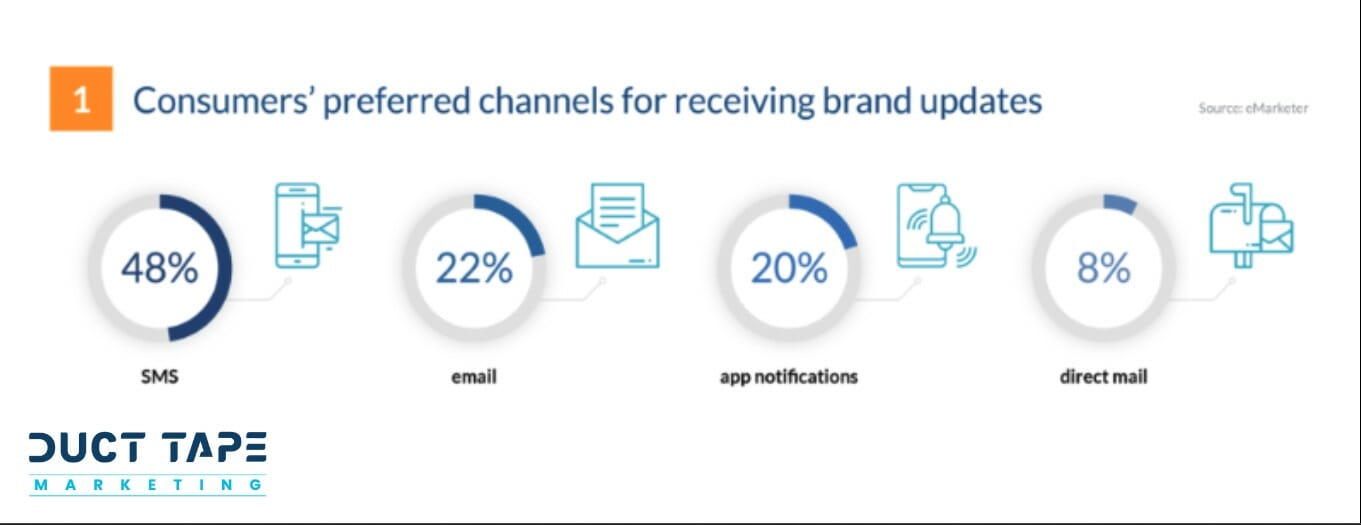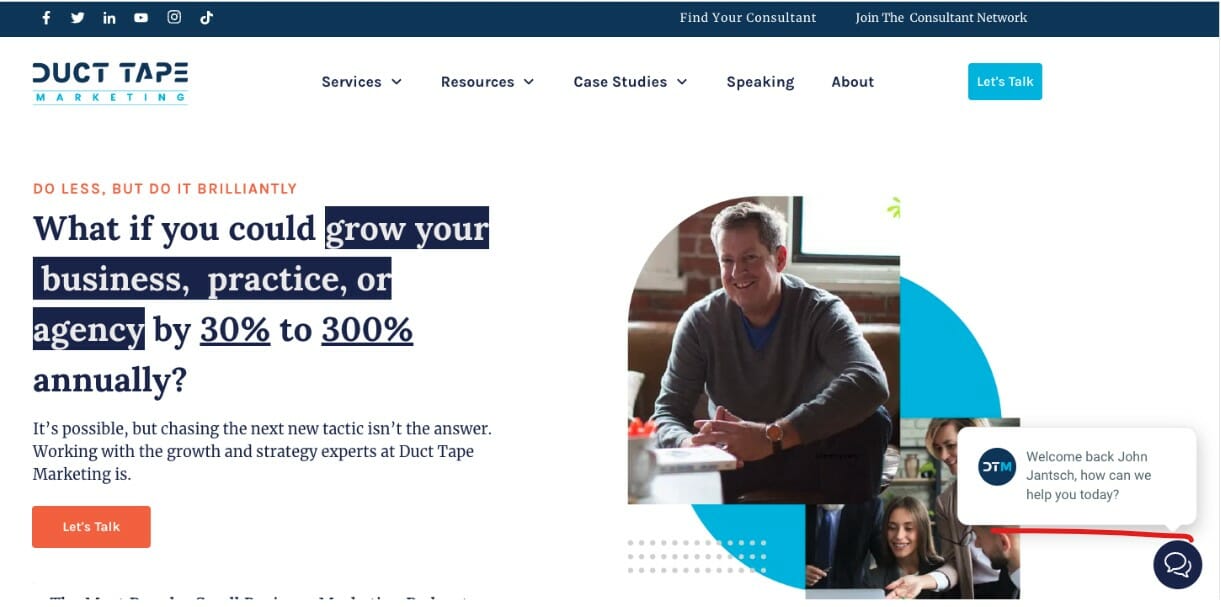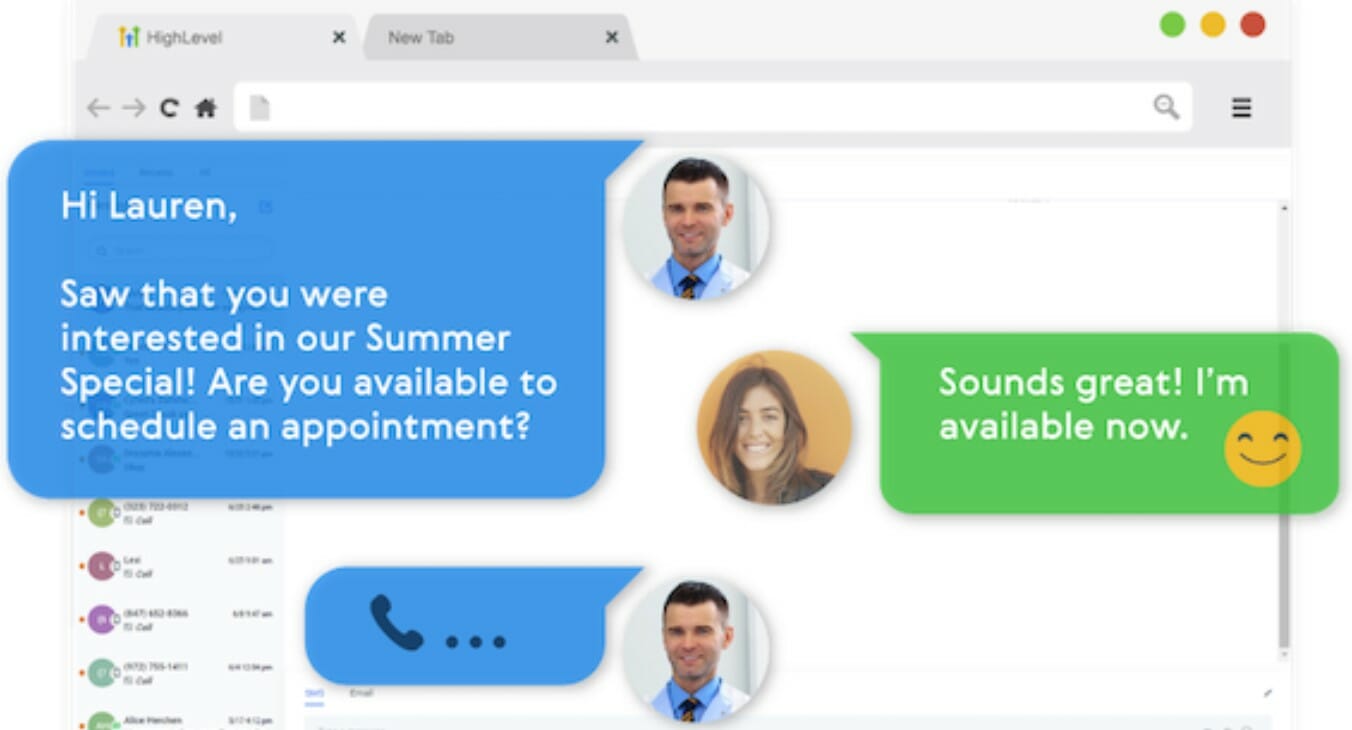Mastering Marketing Strategy: Simplify Your Success with These 5 Key Questions written by John Jantsch read more at Duct Tape Marketing
Marketing Podcast with John Jantsch

Get Your Free AI Prompts To Build A Marketing Strategy:
Like this show? Click on over and give us a review on iTunes, please!
Connect with John Jantsch on LinkedIn
John (00:08): Hello and welcome to another episode of the Duct Tape Marketing Podcast. This is John Jantsch, no guest. Today. I’m going to do a solo show. So the whole basis of this show is the large confusion that I have seen around this idea of marketing strategy. What is a marketing strategy? This is, boy, I tell you, if I would ask 10 people, I would get 10 different definitions. If I were to ask Google, I’d get 10 different definitions. I think for a lot of people, this is a needlessly complex idea, but it’s also a terribly misunderstood idea. So today what I want to do is simplify this idea by boiling the entire thing down to answering five questions. Now, I’m not saying each of the answers to these questions are just going to pop off your tongue that you’re going to know exactly what these are, but these are the questions you need to be able to answer.
(01:12): And once you can, they become really the guiding light for your entire business activity or certainly your marketing activity. In fact, one of the benefits of having a solid marketing strategy around these five questions is that it really helps filter out what you shouldn’t be doing. And I think for a lot of business owners that can actually be more stressful than trying to decide what to do. So this gives you the filter to say yes to this, no to this. Is this helping us answer one of our questions? No. Is this helping us answer one of our questions? Yes, than let’s add that. And I think that that’s for a lot of folks. I think a lot of the confusion around this idea of marketing strategy is that there’s so many things that can be done that maybe you want to do, but what a good solid marketing strategy allows you to do is focus on what should be done in order for you to go where you’re trying to go.
(02:13): So let’s start with the questions. And this I think is a, you could make this, and there are plenty of folks out there pitching the idea of a one page this and a one page that you can make this a one page document if you like. So I suggest if you’re not driving in your car or running on a treadmill or something while you’re listening to this, I suggest that you make note of these five questions because I think that they can be a way for you to start maybe understanding what a marketing strategy is, but further how you would actually use it in your business. Because again, it’s one thing to define something in academic terms and quite a different thing to create a tool that you can actually use and build upon. So here we go. First question, this is the biggie. What is our objective?
(03:04): I mean, what is our purpose? What’s our motivating aspiration? What are we trying to do? What are we trying to win? I know that was more than one question, but some variation of that. The answer to that idea, here’s how we intend to compete, here’s how we intend to really grab market share. I mean, that motivating aspiration has to be a big part of where you start. And I will tell you from a down in the weeds detail standpoint, this comes across from messaging. We spend a significant amount of time with the folks that we work with working on what I call a core message. But a core message is not your nice to have thing you put on your business card thing that you put on the back of your invoices. A core message is your motivating aspiration. Here is how we intend to compete.
(03:54): Here is how we want to be seen in the market. We want to be seen as the high price leader. We want to be seen as the incredible experience. We want to be seen as the expensive but worth it. I mean, those are the motivating aspirations that come out of a core message that clearly communicates how you intend to compete. So that’s number one. Number two, where do we need to be seen? This I think is really tough for a lot of folks because there’s a lot of places you can be seen today. In fact, there’s probably been a new one introduced since I’ve been recording this. And I think that that’s, of course the problem is that we scatter ourselves everywhere because we don’t want to be missed on TikTok or we don’t want to be missed on this platform or whatever the new platform of the day is.
(04:44): And consequently, we spread ourselves so thin that we can’t really make any impact on any single channel. So where do we need to be seen is largely maybe completely driven by who do we need to see us? Who is our ideal client? We understand clearly who makes an ideal client for our business, who does not. Some people call it personas, whatever you want to call it, understanding the exact person or business that you need to attract the exact problem that you solve for that very specific business. That goes largely into this. Where do we need to be seen? So I like to call this one platform. This is really driven by your channels that you say, look, our ideal client is here, and so we need to dominate. We need to have so much energy around these, maybe two or three, maybe it’s content, maybe it’s SEL, maybe it’s LinkedIn, but we’re going to focus a great deal of our efforts.
(05:49): Whatever those efforts are on those channels, on that platform, that’s going to be our platform. So that again, does a lot weeding out where you don’t need to be seen. And sometimes you might need to be seen there, but the reality is you, I mean, you can’t make an impact. You don’t have enough resources. You have time constraints, you have budget constraints. So you want to focus on where can we make the greatest impact based on what we have? That’s our platform. Alright? Now that we have, I mean we’ve got message, we’ve got ideal client, we’ve got kind of the channels that we’re going to go into. Now it’s simply a matter of let’s create the plan. What tactics, systems, campaigns do we need to put in place that we believe will allow us to be seen and to communicate the message of the problem that we solve for a very specific person in a very specific way.
(06:45): So that’s number three. What tactic systems and campaigns must be in place. Some people call that a marketing plan, but so many people skip straight to that. What tactics do we need and miss this? What’s our objective? Where do we need to be seen and by whom? And those are core elements that come into deciding then what tactics that you need. Once we have those, and again, this is we’re trying to attract, maybe it’s a new message for us, maybe it’s new positioning that you’ve developed. Maybe you’re narrowed your focus on an ideal client. And now we’ve come up with the tactics that we believe are the best case. Like our plan is we’re going to dominate content. SEO, we’re going to dominate on Facebook ads, maybe driving people to that content. I mean, that’s what comes around the plan. But now we need to look back or step back and say, well, what new capabilities are needed for us to execute this plan at the highest level?
(07:47): Doesn’t mean you have to do it today, but you have to realize what are we missing? It might be people, some people generate a whole bunch of leads and realize we don’t have a great sales process, or we don’t have a sales process at all, or we don’t have a sales team at all. So if you are going to execute at the highest level on your plan, what people, what new offer, what new product perhaps, what constraints do we actually need to get rid of in many cases to execute on a marketing plan, the founder of the business needs to get out of certain aspects of what they’re doing. So it might be, if we’re going to do a new marketing plan, we’re going to grow this business and scale this business. Maybe a constraint is that the founder or the CEO or whoever you have in charge of marketing is doing too many admin type of tasks.
(08:37): So those may not on surface feel like marketing tactics, but in many cases, if we’re going to execute on this plan, the process for doing so, that’s number four. The process needs to be set up and planned. It may not happen today, but you need to say, look, our next hire needs to be X if we’re going to execute on this plan, or we need a better offer, or we need new services and products if we’re going to execute on this plan. So there is a linear order to the answering these questions, but also then addressing them. And then number four, how will we win? How do we know we’re winning? What does winning look like, right? So our objective, our motivating aspiration was to be X. How will we know if we’re making progress in that? So simply code for metrics. So we have to measure, we have to first identify what if we’re going to meet our objective, what are the milestones?
(09:40): What are the key performance indicators that are going to suggest we’re actually making progress? And certainly, what does winning maybe in the one year, three year look like? It might be revenue, might be new, customers might be profit, might be, heck, it might be reviews, it might be referrals. I mean, there can be many, many things that become a part of that measurement of winning, but we have to actually identify them and then start tracking them and start watching them. You’ve all heard the cliches, what get measured gets improved or something along those lines. It’s true. I’ve seen it over the years in my business when I didn’t measure. Sometimes good things happen, sometimes bad things happen. When I did measure, we always, if something bad was happening, if something wasn’t working, we always had the ability to jump in and say, why? Where’s the constraint?
(10:33): What’s broken? What’s not working? Where are people getting stuck? And those are things that clearly then allow you to build some momentum. So lemme just recap, what is our objective? What’s our motivating aspiration? That to me comes from message. Where do we need to be seen? What’s our platform in a large degree that is driven by who are we trying to attract? Who is our ideal client? What tactics, systems, campaigns, once we put in place, that essentially is the plan. Again, so many people skip to that, but that’s step number three. What new capabilities are needed? That’s the process. So people offer product solving constraints. And then finally, how will we win? What does winning look like? That’s the metrics. So there you go. Answer those five questions, message, platform, plan, process, metrics, and you’ve got a solid marketing strategy that you can then go ahead and execute on that plan at the highest level. Hopefully this was helpful. I’d love to hear any of your thoughts always on this idea of marketing strategy. Just remember strategy before tactics and you will win.
Sign up to receive email updates
Enter your name and email address below and I’ll send you periodic updates about the podcast.




